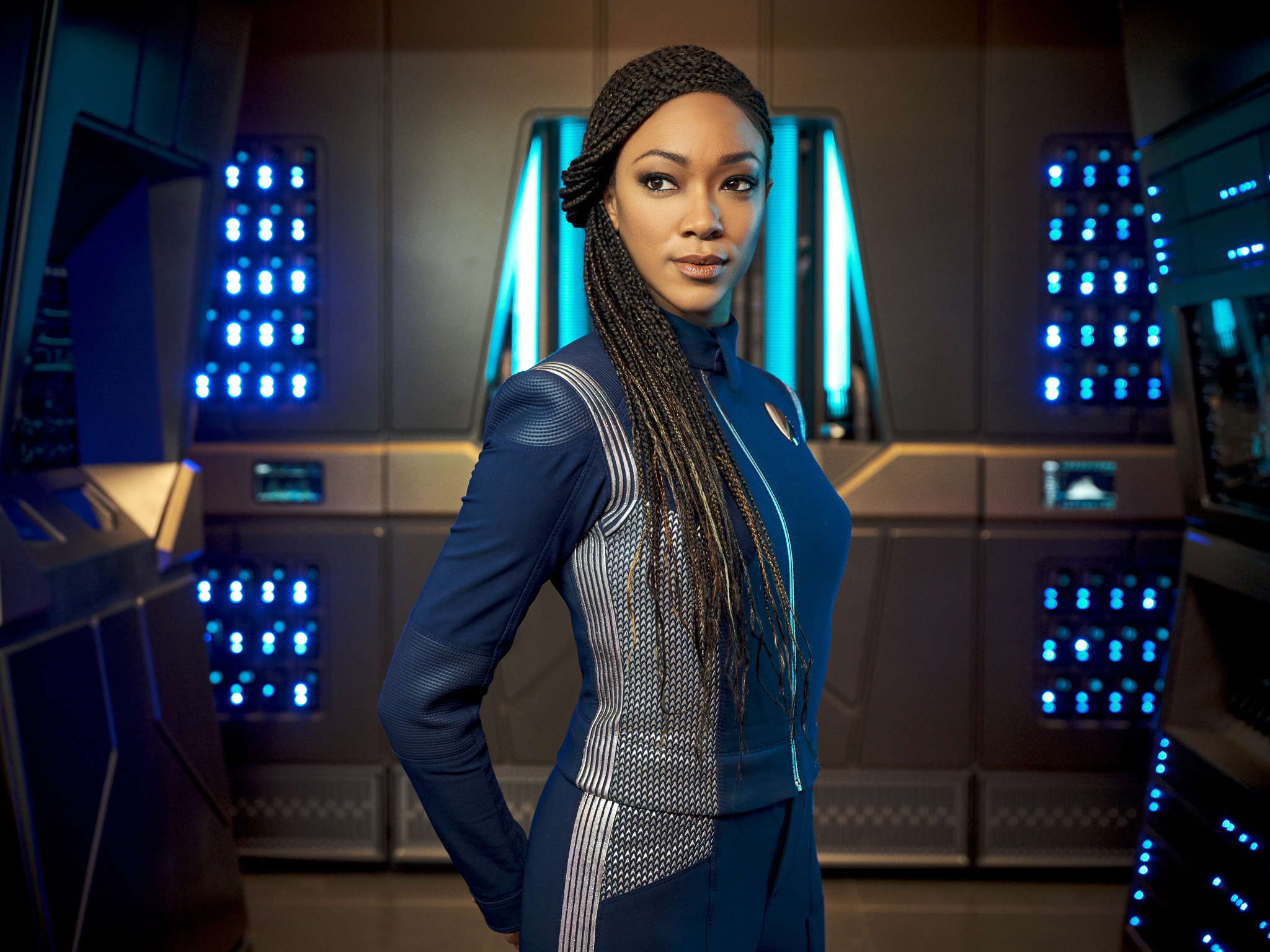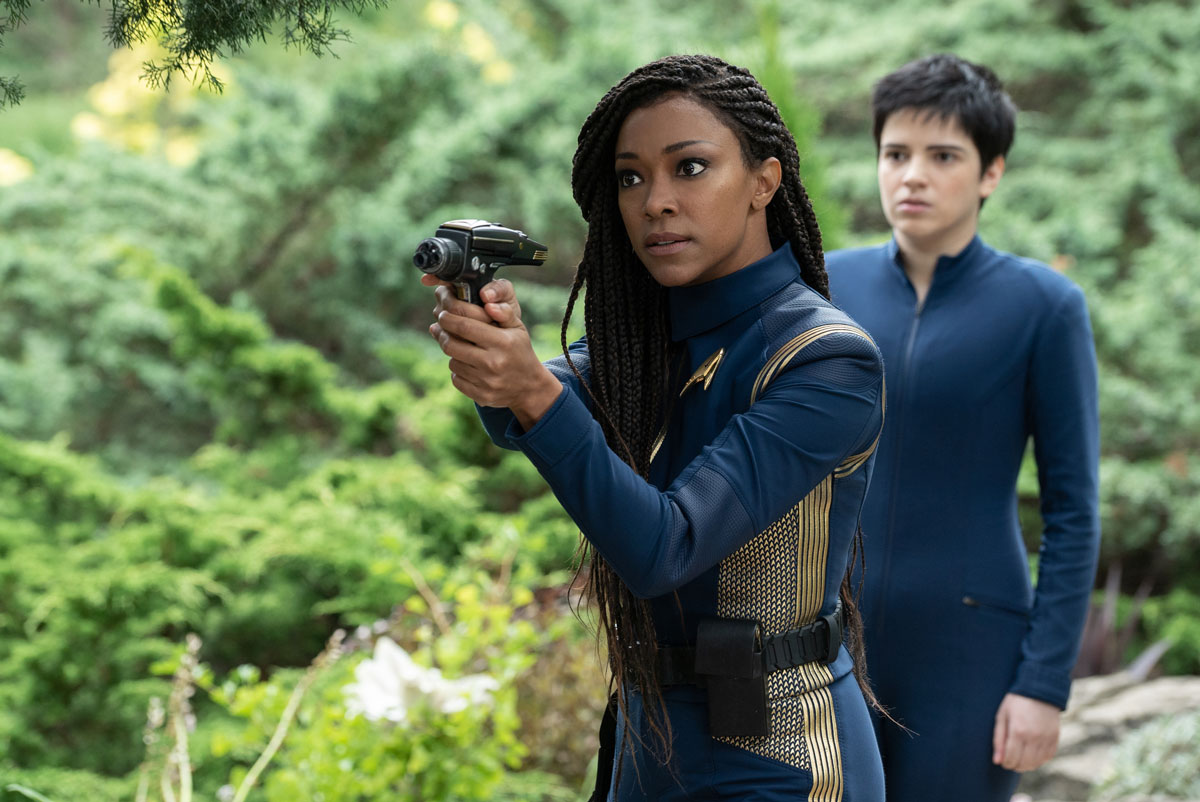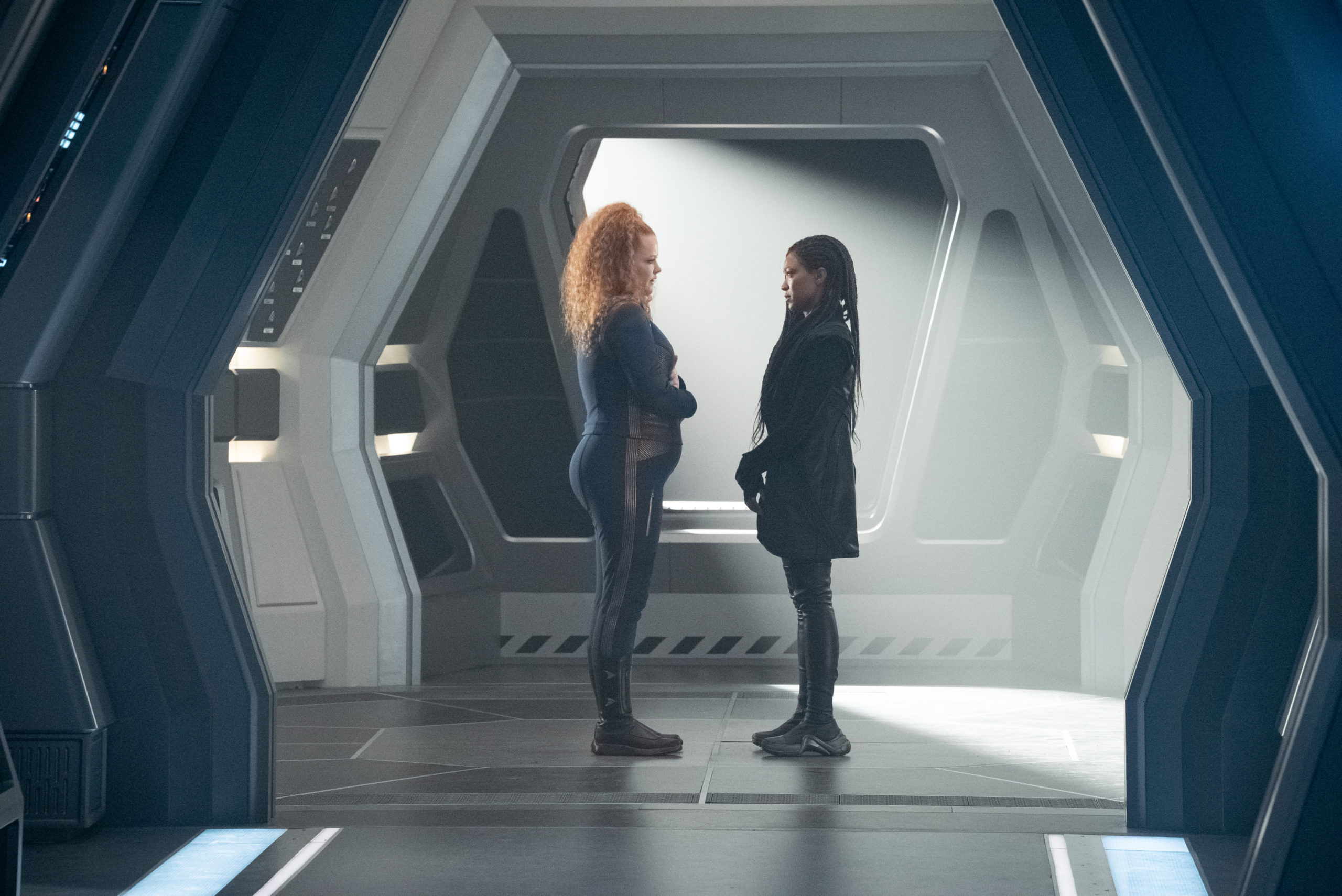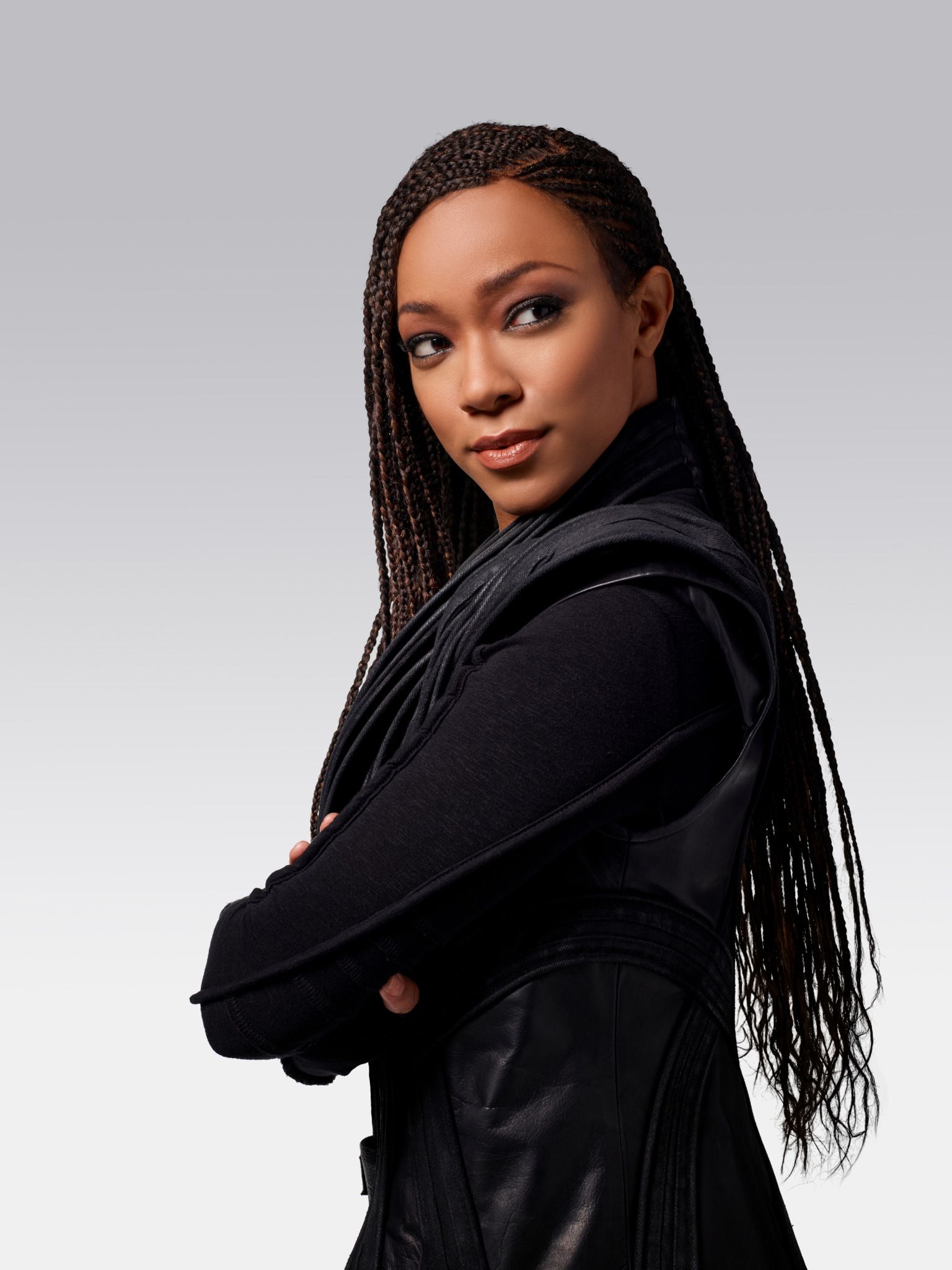After a long hiatus and a stressful quarantine, many of us are thrilled to have Star Trek: Discovery back on the air. Anxious to see where the writer’s room will take us next, the community is positively buzzing with excitement. A new century means new rules, new alien species, and in some cases, new hair.
Many of you have noticed that some members of the Trek community have been talking about Michael Burnham’s new braided hairstyle. While it may seem like a lot of fuss over some braids, Michael’s hair is nothing short of groundbreaking, and we’ve provided a few major reasons why.
What is a protective style?
Michael’s braids are, in truth, fairly common within the Black community. She’s wearing what’s called a “protective style,” something many Black women and girls have worn over the course of their lives. Protective styles function exactly how you’d think – they are styles that seek to protect hair strands from unnecessary breakage and tangles. They also make it easier to moisturize the hair, a critical step to maintaining healthy strands. These styles can include a combination of a cornrow-and-braid set like Michael’s, bun-like bantu knots, or even straight-back braids tucked under wigs. For many Black women, protective styles need to be worn frequently and for long periods of time to ensure their hair remains as healthy as possible, especially when the wearer lives an active lifestyle like Michael.
Why can’t Michael just throw her hair in a ponytail and keep it moving?
I mean, she could just tie it back and go about her business. But the consequences of what seems like a simple act would actually end up costing Michael more time and energy than she may actually have. There are various different hair types that can influence what type of protective style is ideal, or if one is needed at all. When hair is naturally curly or coily, the section of the strand that curls is more fragile than the straight parts, and is highly susceptible to breakage the tighter the curl. The natural coil of Michael’s thick 3A hair, for example, definitely requires frequent detangling if worn free for extended periods of time, even once it’s grown to a length where it can be put in a ponytail. Detangling and styling thick, coily hair is time consuming enough in the 21st century – Michael simply does not have the time to devote to Wash Day if she’s working as a courier or chasing Trance worms with Book.
Okay, so her hair’s in braids. What’s the big deal?
Styles like Michael’s may seem innocent enough, but Black women are still facing discrimination for wearing them in the work place. While there have been grand steps made in erasing the exclusion of Black women in professional settings, many bigotted communities still view protective styles as “unkempt,” or at the very least, unprofessional. Realistically, these styles are reflective of the various Diasporan peoples that have developed and honed their methods over generations. While Michael Burnham is certainly not the first representative of Black culture in Star Trek, she is in fact the first person to portray one of the most treasured staples of Blackness – our hair.
I love the way these styles look! Can I wear one, too?
The short answer: no. The long answer: still no. While the CROWN Act is gaining momentum across the US, many Black women are still ostracized for wearing their hair in its natural state. Wearing a protective style as a trend while the cultural group that created it cannot wear it at all without consequences, is cultural appropriation. Additionally, most protective styles can be detrimental to 1 and 2 hair types, as these styles are simply not developed to protect straighter hair. Bantu knots on type 1 hair might be cute when the style is fresh, but few know that uninstalling the style can – and will – result in damage to straight, fine hair.
Michael’s braids are ultimately a badge of cultural pride. They are stylish, incredibly functional, and are an indicator of a woman who’s got more important things to worry about than her hair. Again, this may not seem like a big deal – hair is hair, after all. But for countless Black women (including those who happen to be Trek fans), seeing Michael’s braid set represented in the future provides more than context – it shows us that we not only survive to see a future free from erasure, bigotry, and misogynoir, but that our heritage is both respected and accepted when we get there.
All in all, whether Michael sticks with these braids or hits us with a #GalacticCrochetSet or her own #OrbitalBantuKnots, her hair represents Women At Warp’s most cherished motto: Intersectional Diversity in Infinite Combinations.




Amazing piece! So beautifully written and covering all the aspects as to why this was a awesome move by show creators!
I liked Michael’s first haircut that was short, different, and individual. Going to long girly braids, like everyone else, seems so NOT Michael, who is so strong, unique, and beautiful.
I also like her shorter hair more, it gave her character more energy, and looks better.
My favorite thing is that Michael’s.hair is no big thing to the crew or the Bridge Kids – no one comments on it or touches it. Just as there is no fuss over Tilly’s change from slicked-back ponytail to curly perm.
The writers have no need to explain it: no hair braiding tech, no multi-species salon, no scenes of Owo (or Book!) braiding Michael’s hair while listening to old earth music. I just hope it doesn’t take until the 23rd century for real life to catch up.
Love this comment! Can only hope this is what the future holds.
I literally screamed out loud when I first saw her braids. I was so happy and excited to see her stylish and functional hair-do. She has gone thru several different styles prior to this…but the braids are un-apologetically black and beautiful. Another Trek first for diversity and inclusiveness.
My only question is how did her hair grow so long in a year.
I think the story would have made more sense if the timespan was more like 5-7 years. A single year is not long enough for people to undergo radical change.